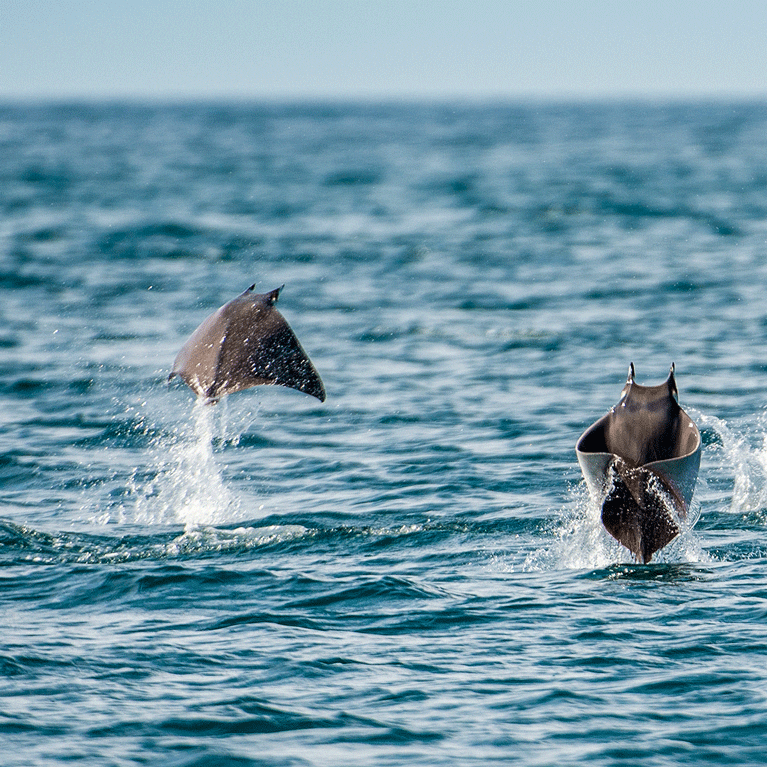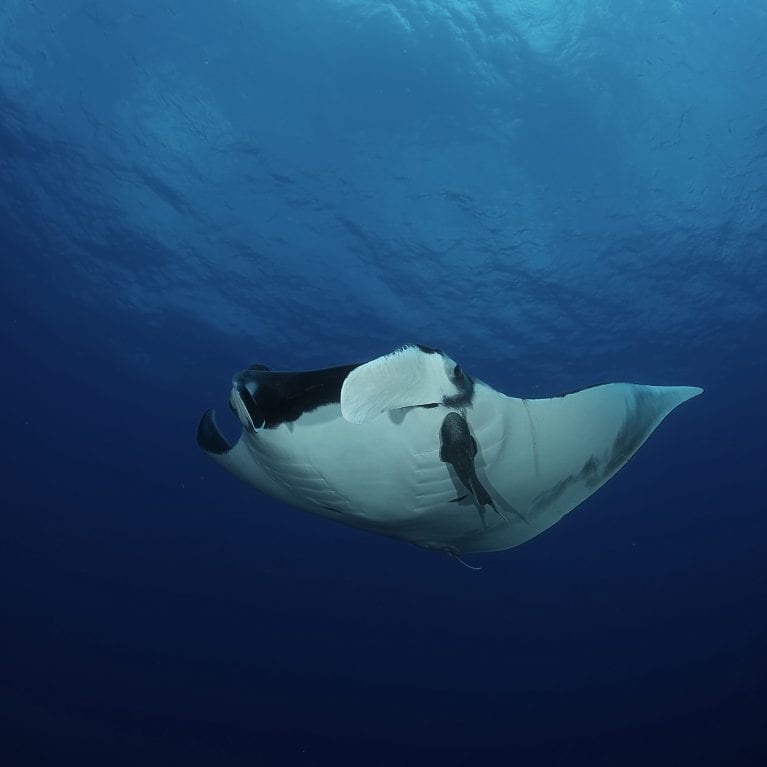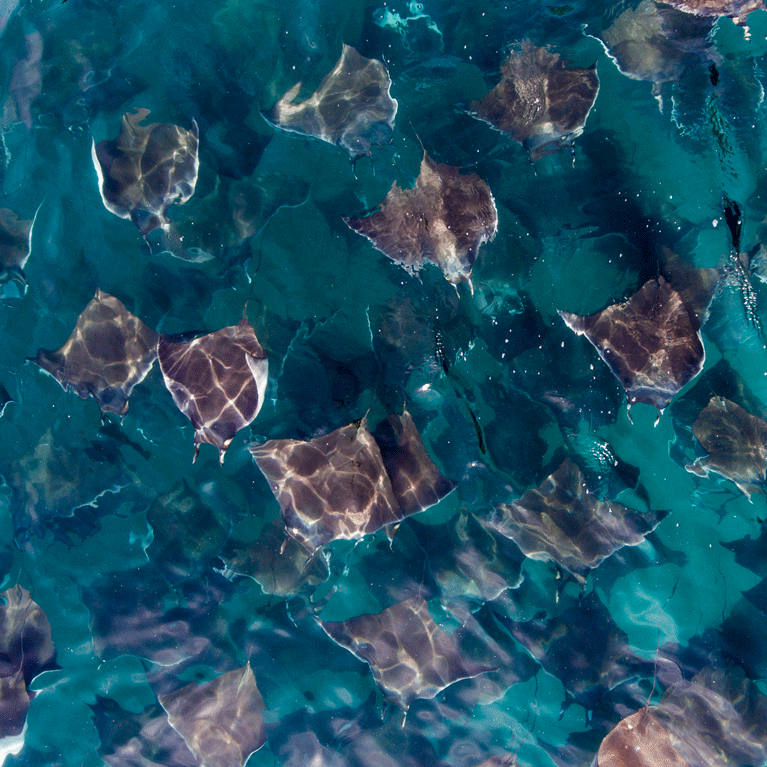Better days for mobulid rays
With no real information about whether or how mobulid rays survive after being released from purse-seine fishing nets in the Eastern Pacific, Josh is training fishery observers to assess the impact of this fishery on these by-catch species and to create best-practice release guidelines to improve the survival rate of the rays.
I grew up as a city kid from New York, far from the tropical oceans where I now work. My escape was the American Museum of Natural History, where I would spend hours in the Hall of Ocean Life staring at frozen tiger sharks chasing sea turtles or lying on the floor examining a life-size blue whale suspended from the ceiling. As a teenager, I took every available opportunity to volunteer for research and conservation projects and went swimming, diving, sailing, kayaking – anything that would get me into the water. When I started college, I enrolled in classes on...



Improving post-release survival of mobulid rays in purse seine fisheries
We will train fishery observers to deploy survivorship tags on mobulid rays captured and released in the purse seine fishery. We will estimate survival probability for different species, and identify covariates that improve survival probability (e.g. handling time, release method). We will create best practices release guidelines that maximize survival.
While the majority of media and conservation attention in the past ten years has focused on targeted fisheries for manta and devil rays, bycatch of these species has been a persistent threat for much longer and remains a challenge that is not easily addressed with management measures such as CITES and CMS listings. Due to generally low population growth rates, the high levels of bycatch present in industrial fisheries may have a severe impact on mobulid populations. In the eastern Pacific tuna purse seine fishery, mobulids cannot be retained and must be released without using obviously damaging handling methods (e.g. punching holes through pectoral fins, piercing gills with gaffs). However, it is unknown what proportion of released individuals survive. This makes it impossible to quantify the impacts of this fishery on population viability. Additionally, while previous studies have estimated relatively low survival rates (~43%), improved handling methods may increase survival probability and mitigate impacts.
Manta and devil (mobulid) rays are threatened globally by targeted capture and bycatch in industrial and artisanal fisheries (Croll et al. 2016). Mobulid rays have some of the lowest population growth rates of all shark and ray species (Dulvy et al. 2014; Pardo et al. 2016) and many mobulid populations have experienced declines over the past decade in response to growing fishery pressure (Lewis et al. 2015; White et al. 2015). While most management efforts have sought to curtail targeted fisheries for mobulids, bycatch is likely a more widespread threat to mobulid populations (Croll et al. 2016). Mitigating the impacts of bycatch on mobulid rays first requires an understanding of those impacts in order to identify opportunities to reduce mortality and consequent population declines. A major gap in our understanding of bycatch impacts is the mortality rate of mobulids that are released alive after capture. Quantifying post-release mortality (PRM) is essential for designing effective management strategies. For example, if PRM approaches 100%, then banning fisheries landings of mobulids without addressing initial capture is an ineffective conservation strategy. Most existing mobulid management efforts take exactly this approach, focusing on banning retention rather than reducing overall captures. Quantifying PRM rates will allow managers to evaluate the efficacy of existing conservation strategies and design more effective future management action.
Only one study has evaluated the PRM of mobulid rays. Francis and Jones (2016) deployed 9 pop-off archival tags on Mobula mobular captured and released from a tuna purse seine fishery in New Zealand. 43% of 7 tagged and reporting individuals survived, while 57% died shortly after release. These results suggest that for M. mobular, PRM may be approximately 50-60%, although these conclusions are drawn from small sample sizes. Tagging data from other species of devil ray (e.g. M. thurstoni) suggest that PRM rates may be much higher, close to 100% (Croll et al, unpublished; this pilot study). This highlights the need for species-specific evaluation of PRM in order to better estimate bycatch impacts on individual species and populations. Furthermore, there is no information on how handling and release methods might affect PRM rates in mobulid rays. In other elasmobranch species, handling and release methods can have a substantial influence on PRM rates (Hutchinson et al. 2015), and the same is likely true for mobulids. Identifying handling and release methods that maximize survival will facilitate the development of bycatch mitigation strategies that reduce impacts on these vulnerable species.
- Train fishery observers to deploy survivorship tags and collect covariate data. We will hold workshops for observers to train them in tag deployment methods and data collection protocols. We previously conducted one training workshop in Ecuador that resulted in six successful tag deployments.
- Collect data on mobulid post-release survivorship. We will analyze data collected by observers and tag-reported survivorship data to estimate the overall survival probability for each species. We will control for environmental variables such as temperature and identify the most important covariates (hypothesized: time on deck, release method) for maximizing survivorship.
- Develop best practices guidelines. Using the data collected here, we will identify the handling and release methods that maximize survival probability across species. We will create guidelines for best practices that can be disseminated throughout tuna purse seine fisheries.
- Identify movements and connectivity. Deployment and release locations reported by tags will provide coarse movement data that will allow us to evaluate large-scale movements and connectivity. Given the broad coverage of the fleet, this will facilitate assessments including offshore pelagic ecosystems that have not been included in previous telemetry studies.

